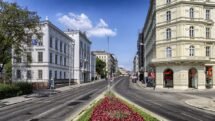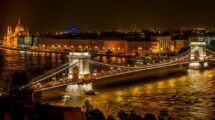| Historical Site | Description |
|---|---|
| Ming Xiaoling Mausoleum | Final resting place of the Hongwu Emperor |
| Nanjing City Wall | Well-preserved ancient city wall dating back to the Ming Dynasty |
| Presidential Palace | Official residence of the President of the Republic of China |
Frequently Asked Questions about Nanjing
1. What are some must-visit historical sites in Nanjing?
Some must-visit historical sites in Nanjing include the Ming Xiaoling Mausoleum, Nanjing City Wall, and Presidential Palace.
2. What is the significance of the Qinhuai River in Nanjing’s history and culture?
The Qinhuai River is known as the “Mother River of Nanjing” and is lined with historical landmarks, tea houses, and gardens, playing a significant role in the city’s culture.
3. How can visitors experience the traditional cuisine of Nanjing?
Visitors can sample local dishes such as duck blood and vermicelli soup, salted duck, and Nanjing salted duck at restaurants and street vendors throughout the city.
4. What are some popular festivals and events in Nanjing?
Popular festivals in Nanjing include the Qinhuai Lantern Festival during Chinese New Year and the Plum Blossom Festival showcasing the city’s plum blossoms.
5. How can visitors explore the art and cultural scene in Nanjing?
Visitors can explore Nanjing’s art scene by visiting museums like Nanjing Museum and Jiangsu Art Gallery, as well as enjoying traditional Chinese opera and dance performances.
6. What are some historical legends and stories associated with Nanjing?
Historical legends in Nanjing include the legend of the Porcelain Tower and the stories of the spirit way at the Ming Xiaoling Mausoleum.
7. What is the best way to explore Nanjing’s traditional tea culture?
To explore Nanjing’s tea culture, visitors can participate in traditional tea ceremonies at local tea houses and purchase high-quality tea leaves at shops and markets.
{Exploring the History and Culture of Nanjing: A City of Ancient Wonders|}1. What are some must-visit historical sites in Nanjing?
When exploring the history and culture of Nanjing, there are several must-visit historical sites that should not be missed. Some of these include:
- The Ming Xiaoling Mausoleum, the final resting place of the Hongwu Emperor, the founder of the Ming Dynasty.
- The Nanjing City Wall, a well-preserved ancient city wall that dates back to the Ming Dynasty.
- The Presidential Palace, which served as the official residence of the President of the Republic of China.
| Historical Site | Description |
|---|---|
| Ming Xiaoling Mausoleum | Final resting place of the Hongwu Emperor |
| Nanjing City Wall | Well-preserved ancient city wall dating back to the Ming Dynasty |
| Presidential Palace | Official residence of the President of the Republic of China |
2. What is the significance of the Qinhuai River in Nanjing’s history and culture?
The Qinhuai River has played a significant role in Nanjing’s history and culture. It is often referred to as the “Mother River of Nanjing” and is lined with historical landmarks, traditional tea houses, and beautiful gardens. The river has been a source of inspiration for poets and artists for centuries, and it is a popular spot for locals and tourists alike to enjoy a leisurely boat ride or take a stroll along its picturesque banks.
3. How can visitors experience the traditional cuisine of Nanjing?
Visitors to Nanjing can experience the traditional cuisine of the city by sampling local dishes such as duck blood and vermicelli soup, salted duck, and Nanjing salted duck. These dishes are known for their complex flavors and use of fresh, local ingredients. There are also many restaurants and street vendors throughout the city where visitors can try these delicacies.
4. What are some popular festivals and events in Nanjing?
Nanjing is home to several popular festivals and events throughout the year. One of the most famous is the Qinhuai Lantern Festival, which takes place during the Chinese New Year and features colorful lantern displays, dragon boat races, and traditional performances. The Plum Blossom Festival in late winter is another highlight, showcasing the city’s beautiful plum blossoms in full bloom.
5. How can visitors explore the art and cultural scene in Nanjing?
Visitors can explore the art and cultural scene in Nanjing by visiting museums such as the Nanjing Museum, which houses a vast collection of ancient artifacts and works of art. The Jiangsu Art Gallery is another must-visit destination for art enthusiasts, showcasing contemporary Chinese art and local artists. Additionally, there are many theaters and performance venues throughout the city where visitors can enjoy traditional Chinese opera and dance performances.
6. What are some historical legends and stories associated with Nanjing?
Nanjing is steeped in history and folklore, with many legends and stories passed down through generations. One of the most famous is the legend of the Porcelain Tower, a magnificent pagoda said to have been built during the Ming Dynasty and destroyed during the Qing Dynasty. Another popular story is that of the spirit way at the Ming Xiaoling Mausoleum, where statues of mythical creatures are said to come alive at night.
7. What is the best way to explore Nanjing’s traditional tea culture?
One of the best ways to explore Nanjing’s traditional tea culture is to visit a local tea house and participate in a traditional tea ceremony. These ceremonies are a time-honored ritual in Nanjing and offer visitors the opportunity to sample different varieties of tea while learning about the history and significance of tea in Chinese culture. There are also many tea shops and markets throughout the city where visitors can purchase high-quality tea leaves to take home as souvenirs.
8. How has Nanjing’s history shaped its modern identity?
Nanjing’s rich history has played a significant role in shaping its modern identity. The city served as the capital of several dynasties throughout China’s history, including the Ming and Qing Dynasties, and has been the site of many important events and cultural developments. Today, Nanjing is known for its blend of ancient traditions and modern innovations, making it a fascinating destination for history buffs and culture enthusiasts alike.
9. What are some unique cultural traditions in Nanjing?
Nanjing is home to several unique cultural traditions that have been passed down through generations. One of these is the art of Nanjing Brocade, a type of traditional woven fabric known for its intricate patterns and vibrant colors. The city is also famous for its annual International Plum Blossom Festival, which celebrates the beauty of the plum blossom and its significance in Chinese culture.
10. How can visitors best appreciate the architecture of Nanjing?
Visitors can best appreciate the architecture of Nanjing by taking a guided tour of the city’s many historical buildings and landmarks. Some of the most beautiful examples of architecture in Nanjing include the Confucius Temple, the Nanjing Drum Tower, and the Jiming Temple. These buildings showcase the unique blend of traditional Chinese and Western architectural styles that can be found throughout the city.



